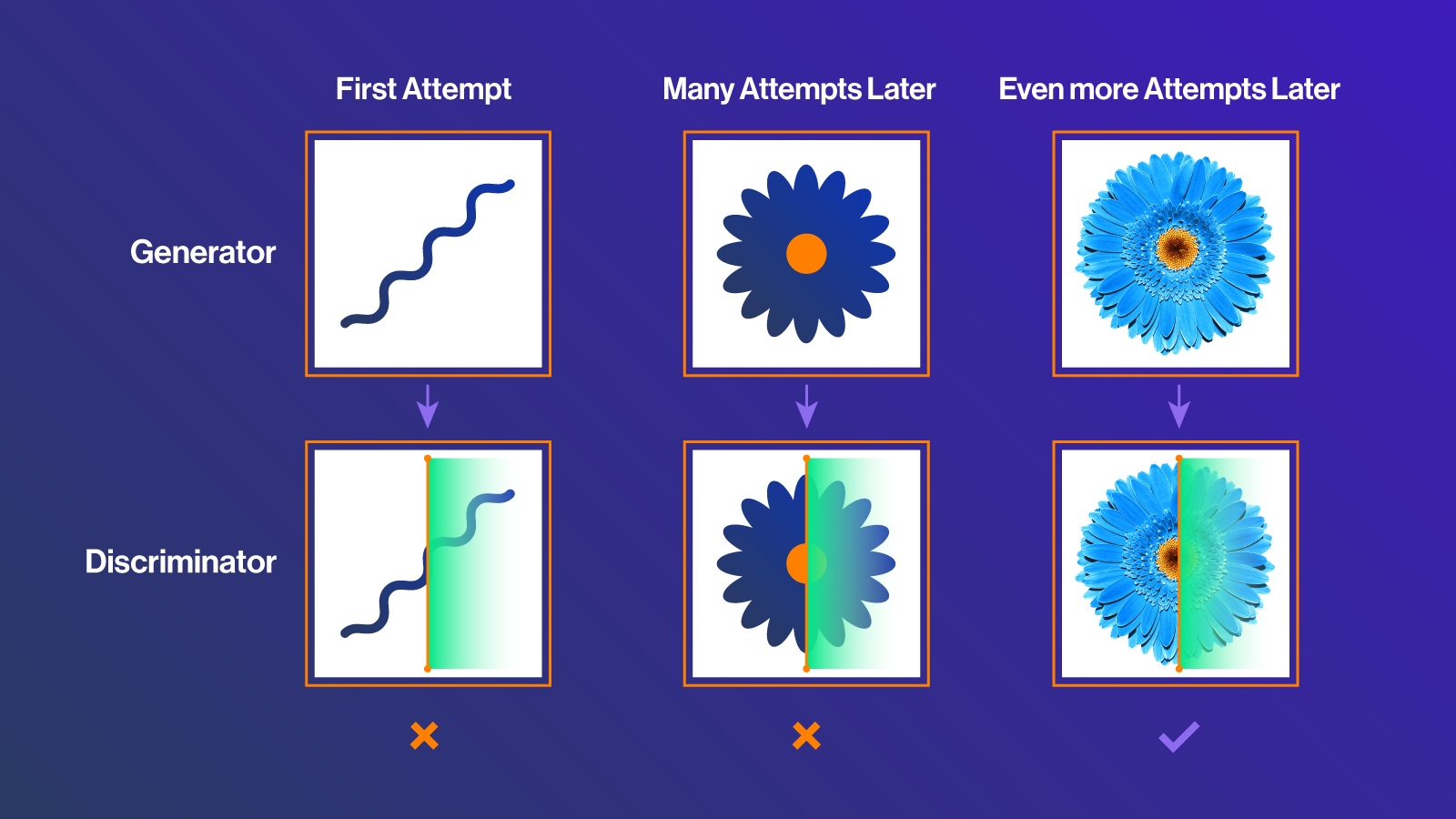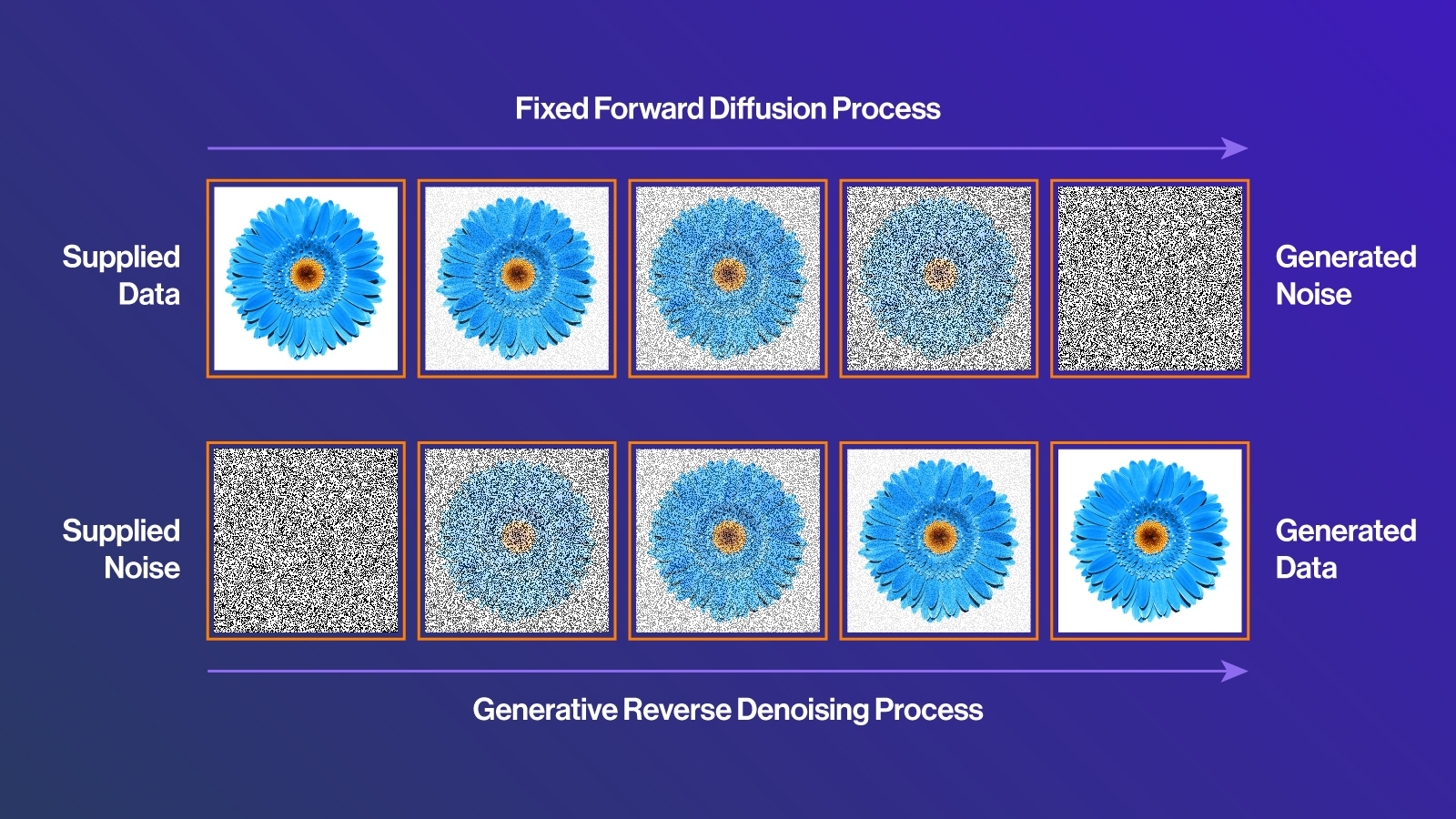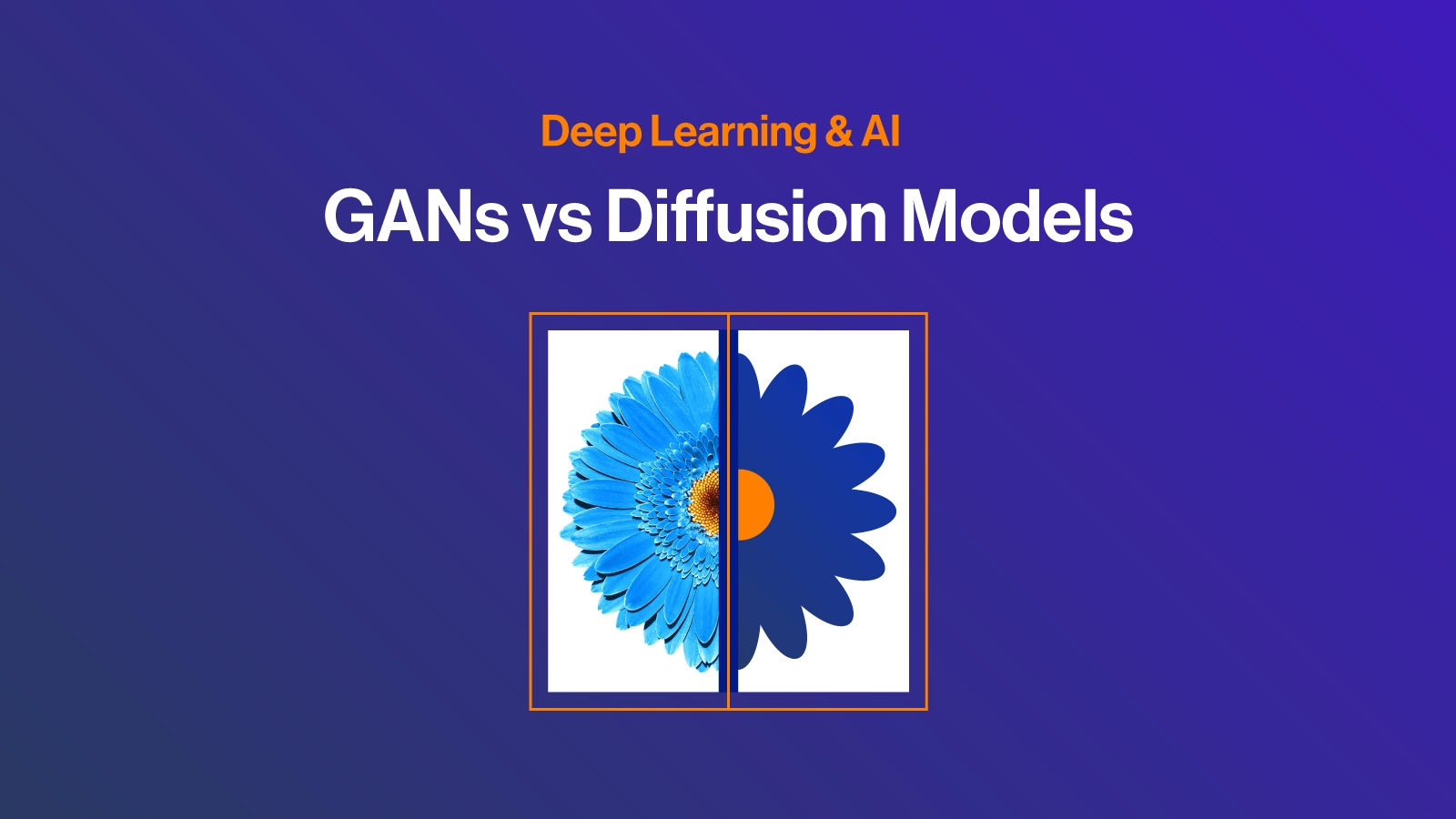Introduction
In the evolving field of AI, generative models have emerged as a groundbreaking approach for generating realistic and diverse data. Two prominent models have made waves: Generative Adversarial Networks (GANs) and Diffusion Models. In this article, we will compare and contrast these two models, explore their capabilities, weaknesses, and applications.
GANs vs Diffusion Models: A Clash of Generative Titans
Generative Adversarial Networks (GANs) and Diffusion Models represent two approaches to generative AI. While both aim to generate high-quality samples, they differ in their underlying architectures and training methodologies.
Generative Adversarial Networks (GANs): Breathing Life into Synthetic Data
GANs was developed by Ian Goodfellow and his team in 2014, which has inspired the field of generative AI. This approach uses two neural networks, a generator and a discriminator, engaged in an adversarial back and forth. The generator is tasked to produce realistic samples, while the discriminator's role is to discern if the sample is real or fake.
GAN Training: Adversarial Dance of Generators and Discriminators
During training, the generator’s job is to continue to improve its output samples with the goal in fooling the discriminator into classifying its generated samples as real. It adjusts its parameters based on the discriminator's feedback, generating more and more realistic samples over time. Simultaneously, the discriminator becomes more adept at distinguishing between real and fake data, which in turn pushing the generator to improve further to generate even more realistic examples.
The competitive nature of GAN training drives the iterative refinement of the generator's output. A loss function is calcualted to quantify the difference between the discriminator's predictions and the ground truth labels; the generator minimizes this loss, while the discriminator maximizes it. As training continues, the networks update their parameters based on each other's feedback, gradually enhancing the quality and realism of the generated samples.
Advantages and Limitations of GANs
GANs offer several advantages, making them an appealing choice for generative tasks. GANs excel at generating highly realistic and detailed samples across various mediums, including images, audio, and text. GANs can also appear to be creative by exploring the latent space to generate diverse outputs. If you’ve ever heard of the website ‘this-person-does-not-exist.com’ every computer generated face is unique. Since GANs can create realistic samples, it can deploy data augmentation by using its outputs as further training examples for additional diveristy in the dataset.
However, GANs suffer from certain limitations, such as mode collapse, where the generator fails to capture the entire distribution of the training data, resulting in repetitive or limited samples. The adversarial training between discriminator and generator must strike a fine balance to ensure reliable training. If the discriminator is not robust enough, the generator can output poor examples.The evaluation metric in detremining precision and recall is an active area of research to fully optimize the data hungry GAN.

Training Generative AI models take immense computing power considering the large files and datasets needed to perfect your model. Invigorate your computing infrastructure with SabrePC Deep Learning and Training Servers.
Diffusion Models: An Elegant Journey from Noise to Data
Diffusion Models, on the other hand, take a different route to generate data. Developed by Dinh et al. in 2014, diffusion models focus on the transformation of noise into desired data by iteratively applying a series of steps.
Diffusion Process: From Noise to Data
The model starts with random noise and uses a diffusion process to slowly generate a sample. Through successive diffusion steps, small changes are added to transform the noise back into the desired image, improving the generated samples. The model learns to capture complex dependencies and patterns present in the data. Doing so multiple times with good data, the model can learn to estimate the data distribution and can start from noise to generate what ever image is desired.
During training, the model minimizes the difference between the generated samples and the target distribution. A loss function quantifies this discrepancy, and the model's parameters are adjusted iteratively to minimize the loss driving the model to produce samples that closely resemble the real data.
Advantages and Limitations of Diffusion Models
Diffusion Models possess unique advantages that set them apart from GANs. Firstly, diffusion models offer fine-grained control over the generation process, allowing users to manipulate the quality and diversity of the generated data. They provide a natural framework for data synthesis and denoising tasks to make realistic samples. The training process is much more stable than GANs and don’t uffer from mode collapse.
However, diffusion models tend to be computationally intensive and require longer training times compared to GANs and has a lot of knobs and levers to fine tune to get the best samples. Capturing multimodal distributions can be even more difficult such as images, videos, or combination of motion and still graphics. We have seen very strong examples of Diffusion models like the text to image models DALLE-2, Midjourney, and Stable Diffusion. Diffusion models have won artistic awards only revealed after the fact that the image was AI generated.

GANs vs Diffusion Models: FAQs
1. What are the main differences between GANs and Diffusion Models?
GANs and Diffusion Models differ in their approaches to generative modeling. GANs utilize an adversarial game between a generator and discriminator to produce realistic samples, while Diffusion Models transform noise into data through an iterative diffusion process.
2. Which model is better for generating realistic images?
GANs are often favored for generating realistic images due to their ability to capture intricate details and produce visually appealing samples. However, Diffusion Models offer fine-grained control over the generation process, making them suitable for specific image synthesis tasks.
3. Can GANs and Diffusion Models be combined?
Yes, it is possible to combine GANs and Diffusion Models to leverage the strengths of both approaches. This hybrid approach, known as GAN with Diffusion (GANDI), incorporates the diffusion process of Diffusion Models into the training of GANs, resulting in enhanced sample quality and diversity.
4. Which model is more computationally efficient? GAN or Diffusion?
Generally, GANs are considered to be more computationally efficient compared to Diffusion Models. GANs leverage parallelization techniques and can be trained on powerful GPUs, enabling faster training and generation times. Diffusion Models, on the other hand, require longer training times and can be more computationally intensive.
5. What are the potential applications of GANs and Diffusion Models?
Both GANs and Diffusion Models have a wide range of applications across various domains. GANs find applications in image synthesis, style transfer, data augmentation, and anomaly detection. Diffusion Models excel in image inpainting, denoising, and data synthesis tasks. Both models can also be utilized for generating text, audio, and video data.
6. Are there any challenges associated with GANs and Diffusion Models?
While GANs and Diffusion Models offer powerful generative capabilities, they also face challenges. GANs may suffer from mode collapse, where the generator produces limited or repetitive samples. Diffusion Models require careful tuning of hyperparameters and longer training times. Additionally, both models require large amounts of training data for optimal performance.
Conclusion
In the realm of generative modeling, GANs and Diffusion Models have emerged as leading contenders, each with its own unique strengths and applications. GANs excel in producing highly realistic and diverse samples, while Diffusion Models offer fine-grained control and versatility. By understanding the nuances of GANs vs Diffusion Models, researchers and practitioners can harness the power of generative models to unlock new possibilities in various domains.
In conclusion, GANs and Diffusion Models represent two distinct paths in the exciting field of generative modeling. As these technologies continue to evolve, they hold the potential to transform how we create and interact with synthetic data. So whether you choose the adversarial dance of GANs or the elegant diffusion process of Diffusion Models, the future of generative models is full of possibilities.
Boosting your computing is the best thing to do when developing large models like Generative AI.
Contact SabrePC today for your computer hardware needs.


